Construction Planning
Deliberate the details up front to ensure your project goes smoothly.
-
Are the breaker, wiring and control systems equipped to service all lighting requirements?
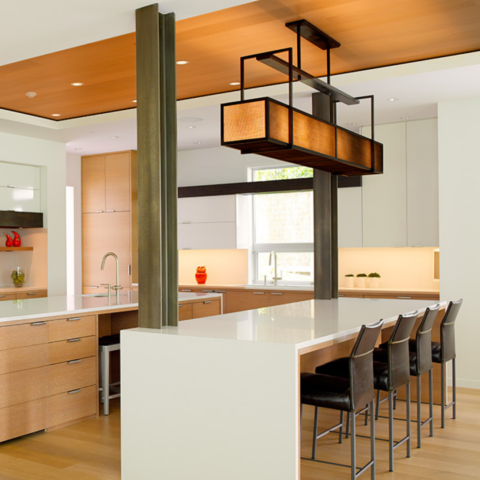
• Large chandeliers often require dedicated electrical service from the breaker.
• Multi-functional fixtures that combine decorative and task lighting — e.g. over a dining table or kitchen island — typically require separate wiring for each circuit.
• Lamping must be compatible with the lighting control system.
-
Have the weight and dimensions of large fixtures been addressed during the construction phase?
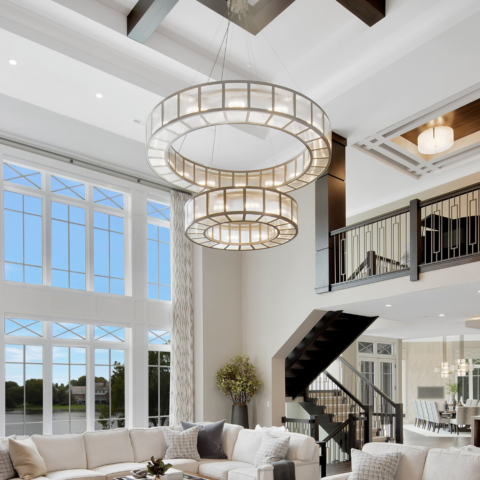 • Heavy fixtures require blocking, typically installed during the framing process.
• Heavy fixtures require blocking, typically installed during the framing process.• For large chandeliers hanging high overhead, specifying a light lift will lower installation and maintenance costs and reduce the risk of damage.
• Doorways and halls must be large enough for oversized fixtures to fit through.
• Fixtures must not interfere with sprinkler head performance or HVAC ducting.
-
Are J-boxes correctly installed in the proper locations?
 • A standard j-box wall height will not suffice for many sconce designs.
• A standard j-box wall height will not suffice for many sconce designs.• Bathroom lighting often requires j-boxes in locations other than the vanity mirror.
-
Will a fixture mount to its intended surface?
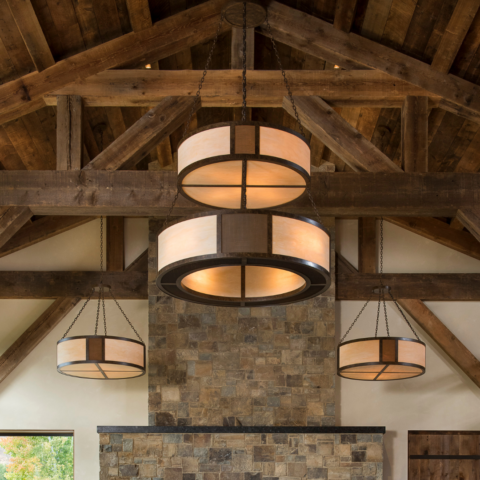 • Fixtures designated to mount on stone or other uneven material may require a backplate or canopy template to create a flat mounting surface.
• Fixtures designated to mount on stone or other uneven material may require a backplate or canopy template to create a flat mounting surface.• Check the pitch of your ceiling, is it sloped or flat? The pitch determines what kind of mounting options will work best with the desired light.
-
What's the difference between damp and wet-rated fixtures?
At first glance, the definitions of damp and wet-rated lighting may seem clear, but these terms are often confused and most specifiers don’t know the difference. When dealing with lighting, understanding the two is extremely important for the life and safety of your fixture.
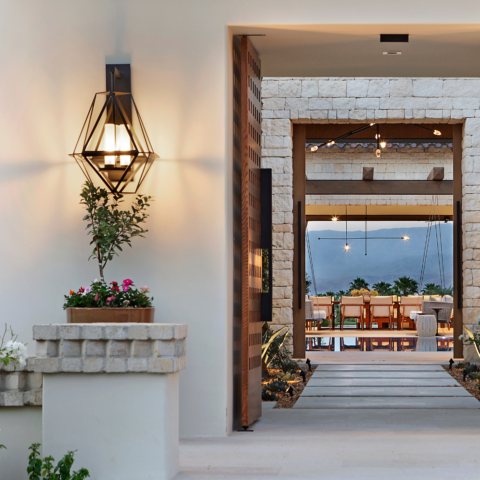 • Damp-rated fixtures are built for outdoor locations protected from harsh weather, such as a covered porch, patio, or balcony with minimal exposure to humidity and other weather conditions.
• Damp-rated fixtures are built for outdoor locations protected from harsh weather, such as a covered porch, patio, or balcony with minimal exposure to humidity and other weather conditions.• Wet-rated fixtures are designed to withstand direct exposure to outdoor elements like severe humidity, rain, or snow; certifying the fixture can endure even the most extreme climates.
-
What do local building codes require?
Most municipalities and planned communities nationwide now require certain lighting specifications and certifications. Understanding Dark Sky compliance, color temperature, and other lighting code considerations is critical to ensuring that products and services are safe for both the consumer and the environment. Work closely with your local building department to ensure your lights comply with their standards, as they vary from one municipality to another. Click below to learn more:
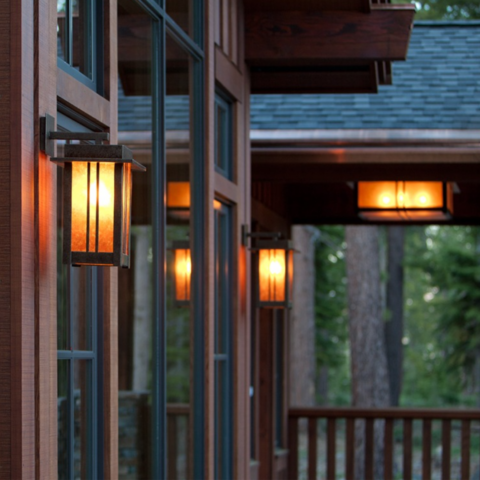 • IDA Dark Sky Certified Lighting
• IDA Dark Sky Certified Lighting